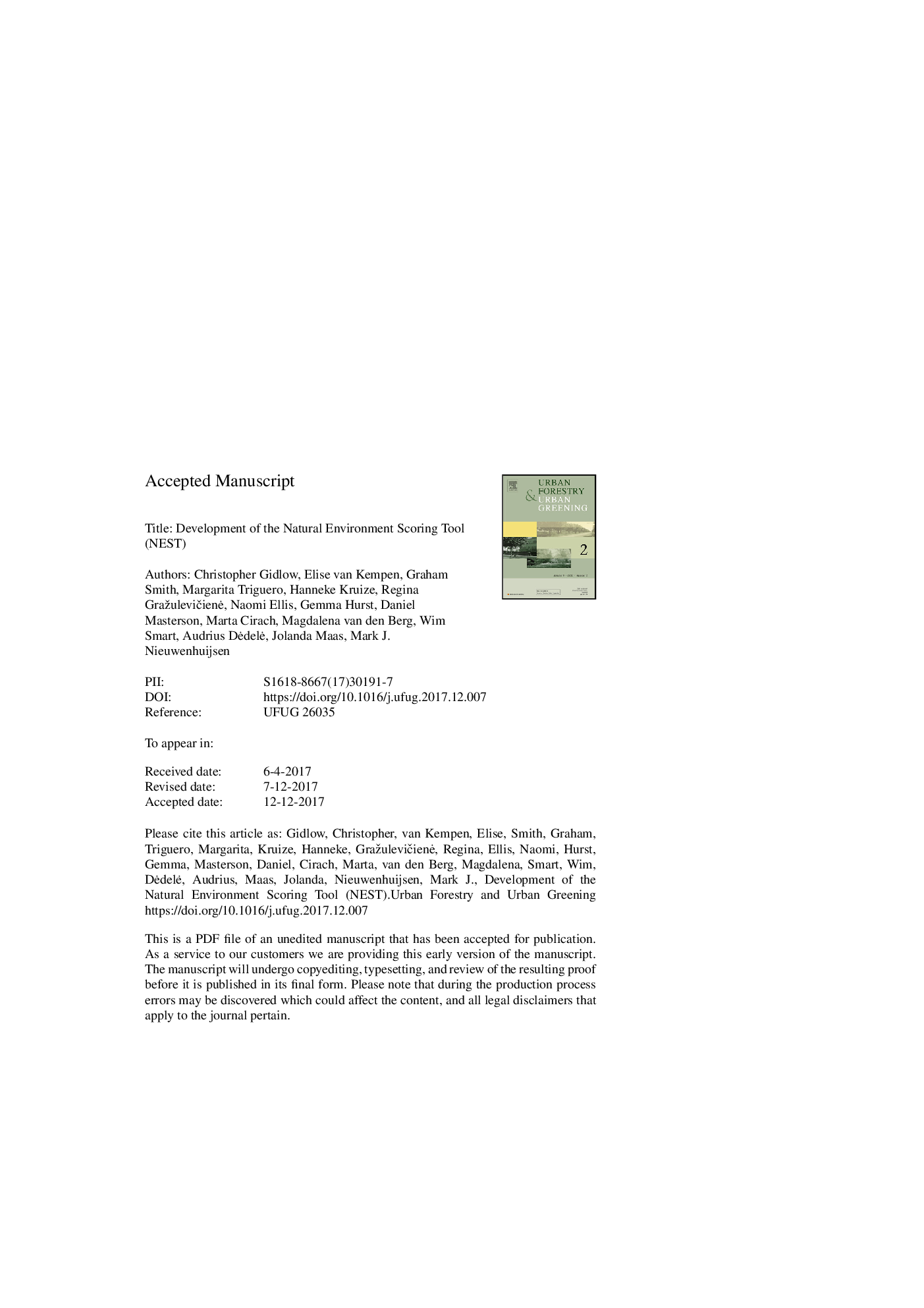| Article ID | Journal | Published Year | Pages | File Type |
|---|---|---|---|---|
| 6549517 | Urban Forestry & Urban Greening | 2018 | 49 Pages |
Abstract
In total, 174 natural environments, covering a range of typologies, were audited. Mean time to complete NEST was 16â¯Â±â¯28â¯min. There was good inter-rater agreement. Mean domain scores showed some expected patterns by typology (e.g., higher Recreation Facilities scores in urban parks and formal recreation areas; lower Amenities scores in natural/semi-natural areas). Highest mean Overall Scores were observed for areas of blue space and woodland, the types of area that often lack the recreational facilities or amenities that can be dominant in physical activity-focused audit tools. There was a trend towards lower natural environment quality in neighbourhoods of lower SES, with some inter-city variation. Correlations between NEST scores and amount of natural environment indicated higher natural environment in areas with worse access. We recommend further testing of NEST in other locations in relation to use and health outcomes.
Related Topics
Life Sciences
Agricultural and Biological Sciences
Forestry
Authors
Christopher Gidlow, Elise van Kempen, Graham Smith, Margarita Triguero-Mas, Hanneke Kruize, Regina GražuleviÄienÄ, Naomi Ellis, Gemma Hurst, Daniel Masterson, Marta Cirach, Magdalena van den Berg, Wim Smart, Audrius DÄdelÄ, Jolanda Maas,
